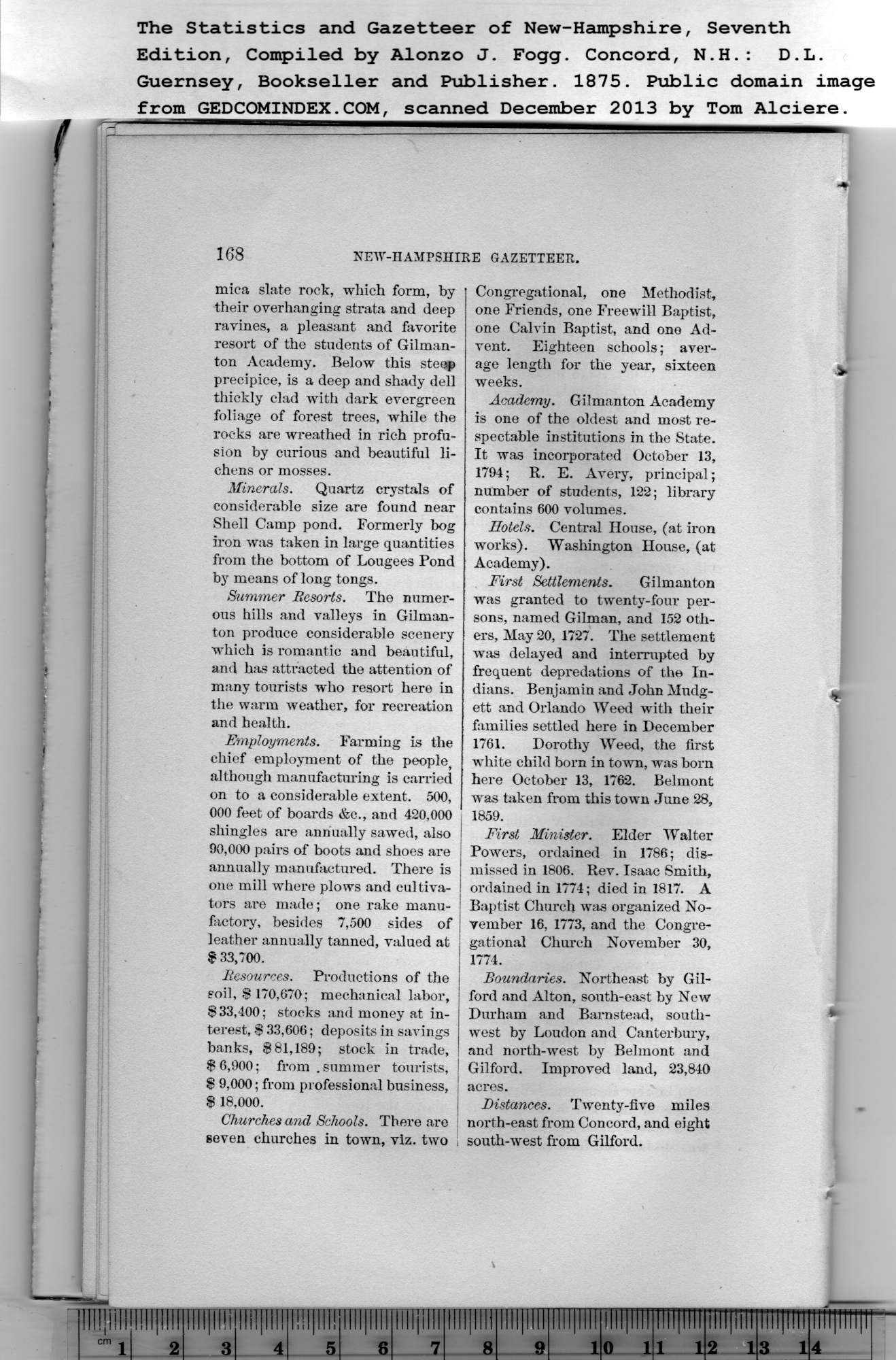|
mica slate rock, which form, by
their overhanging strata and deep
ravines, a pleasant and favorite
resort of the students of Gilman-
ton Academy. Below this steep
precipice, is a deep and shady dell
thickly clad with dark evergreen
foliage of forest trees, while the
rocks are wreathed in rich profu-
sion by curious and beautiful li-
chens or mosses.
Minerals. Quartz crystals of
considerable size are found near
Shell Camp pond. Formerly bog
iron was taken in large quantities
from the bottom of Lougees Pond
by means of long tongs.
Summer Resorts. The numer-
ous hills and valleys in Gilman-
ton produce considerable scenery
which is romantic and beautiful,
and has attracted the attention of
many tourists who resort here in
the warm weather, for recreation
and health.
Employments. Farming is the
chief employment of the people,
although manufacturing is carried
on to a considerable extent. 500,
000 feet of boards &c., and 420,000
shingles are annually sawed, also j
90,000 pairs of boots and shoes are ;
annually manufactured. There is j
one mill where plows and eultiva- !
tors are made; one rake manu-
factory, besides 7,500 sides of
leather annually tanned, valued at
$ 33,700.
Resources. Productions of the
soil, $ 170,670; mechanical labor,
$33,400; stocks and money at in-
terest, $ 33,606; deposits in savings
hanks, $81,189; stock in trade,
$ 6,900; from . summer tourists,
$ 9,000; from professional business,
$ 18,000.
Churches and Schools. There are
seven churches in town, viz. two |
Congregational, one Methodist,
one Friends, one Freewill Baptist,
one Calvin Baptist, and one Ad-
vent. Eighteen schools; aver-
age length for the year, sixteen
weeks.
Academy. Gilmanton Academy
is one of the oldest and most re-
spectable institutions in the State.
It was incorporated October 13,
1794; R. E. Avery, principal;
number of students, 122; library
contains 600 volumes.
Hotels. Central House, (at iron
works). Washington House, (at
Academy).
First Settlements. Gilmanton
was granted to twenty-four per-
sons, named Gilman, and 152 oth-
ers, May 20, 1727. The settlement
was delayed and interrupted by
frequent depredations of the In-
dians. Benjamin and John Mudg-
ett and Orlando Weed with their
families settled here in December
1761. Dorothy Weed, the first
white child born in town, was born
here October 13, 1762. Belmont
was taken from this town June 28,
1859.
First Minister. Elder Walter
Powers, ordained in 1786; dis-
missed in 1806. Rev. Isaac Smith,
ordained in 1774; died in 1817. A
Baptist Church was organized No-
vember 16, 1773, and the Congre-
gational Church November 30,
1774.
Roundaries. Northeast by Gil-
ford and Alton, south-east by New
Durham and Barnstead, south-
west by Loudon and Canterbury,
and north-west by Belmont and
Gilford. Improved land, 23,840
acres.
Distances. Twenty-five miles
north-east from Concord, and eight
south-west from Gilford. |
